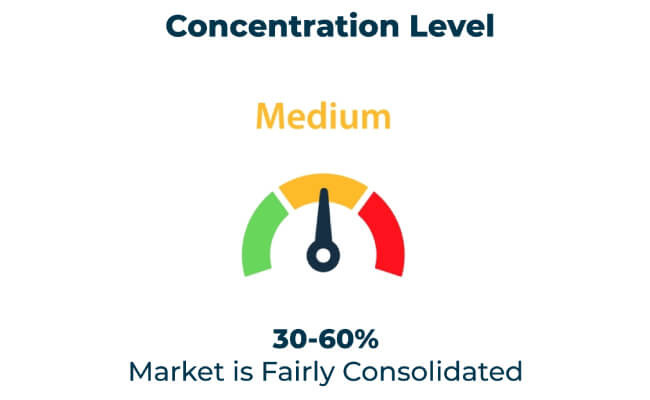The baby bottle market in Indonesia is witnessing robust growth, driven by increasing awareness of infant health and hygiene, a growing population, and rising disposable incomes. Key drivers include demand for BPA-free materials, innovative designs, and multifunctional baby bottles that cater to health-conscious parents.
Manufacturers are focusing on eco-friendly materials, ergonomic designs, and anti-colic features to meet diverse consumer needs. Collaborations with retailers, e-commerce platforms, and healthcare providers are further propelling market growth.
Exclusive Offer: 30% Off on Regional Reports
Get a free sample report and customize your regions for a 30% discount on your regional report!
Summary
This analysis outlines the positioning of major players in the Indonesian baby bottle market. Pigeon Corporation leads with innovative and BPA-free solutions but faces challenges in pricing for cost-sensitive segments. Philips Avent excels in premium and ergonomic designs but struggles to penetrate rural areas. Dr. Brown’s focuses on anti-colic technology but encounters competition from regional brands. Opportunities lie in targeting untapped rural markets and leveraging digital marketing channels, while threats include rising raw material costs and competition from low-cost manufacturers.
Pigeon Corporation
Pigeon Corporation demonstrates strengths in its high-quality, BPA-free, and innovative designs. However, weaknesses include higher price points that limit affordability for certain demographics. Opportunities include partnerships with healthcare providers to promote infant health products. Threats arise from increasing competition and price-sensitive local brands.
Philips Avent
Philips Avent is known for its premium baby bottles with ergonomic designs and anti-colic features. However, the company faces challenges in expanding its reach to rural markets. Opportunities exist in digital marketing and launching affordable product lines. Threats include competition from domestic manufacturers and fluctuating economic conditions.
Dr. Brown’s
Dr. Brown’s excels in offering anti-colic and high-performance baby bottles. However, the brand struggles with distribution and visibility in remote areas. Opportunities lie in expanding partnerships with retailers and e-commerce platforms. Threats include rising costs of production and regulatory hurdles.
| Category | Market Share (%) |
|---|---|
| Top 3 Players (Pigeon Corporation, Philips Avent, Dr. Brown’s) | 18% |
| Rest of Top 5 Players | 07% |
| Next 5 of Top 10 Players | 14% |
Type of Player & Industry Share (%)
| Type of Player | Market Share (%) |
|---|---|
| Top 10 Players | 37% |
| Next 20 Players | 24% |
| Remaining Players | 39% |

Year-on-Year Leaders
The Indonesian government emphasizes strict regulations on BPA-free and food-grade materials for baby bottles. Compliance with international safety standards such as FDA and EU certifications is crucial for manufacturers.
Check Free Sample Report & Save 40%!
Select your niche segments and personalize your insights for smart savings. Cut costs now!
Emerging markets in Southeast Asia and the Middle East present significant growth potential for Indonesian baby bottle manufacturers. Affordable and high-quality baby bottles are increasingly in demand to meet global standards.
In-House vs. Contract Manufacturing
The baby bottle market in Indonesia is influenced by regional dynamics, with urban centers leading demand due to higher awareness and disposable income. Rural areas present untapped growth opportunities as awareness campaigns expand.
| Region | Urban Areas |
|---|---|
| Market Share (%) | 65% |
| Key Drivers | Higher disposable incomes and premium demand. |
| Region | Rural Areas |
|---|---|
| Market Share (%) | 35% |
| Key Drivers | Growing awareness and increasing accessibility. |
The baby bottle market in Indonesia will expand through innovations in eco-friendly materials, digital marketing, and smart bottle technologies. Companies focusing on affordability, safety, and premium features will lead the market. Investment in consumer education and e-commerce infrastructure will further drive growth.
| Tier | Key Companies |
|---|---|
| Tier 1 | Pigeon Corporation, Philips Avent, Dr. Brown’s |
| Tier 2 | Comotomo, Medela |
| Tier 3 | Tommee Tippee, Chicco |
The baby bottle market in Indonesia is set for steady growth, driven by rising consumer awareness, health-conscious product preferences, and e-commerce penetration. Companies prioritizing innovation, safety, and sustainability will dominate this evolving market.
Key Definitions
Abbreviations
CAGR: Compound Annual Growth Rate.
Research Methodology
This report is based on primary research, secondary data analysis, and market modeling. Insights were validated through industry expert consultations.
The baby bottle market in Indonesia includes BPA-free, eco-friendly, and technologically advanced feeding bottles for infants and toddlers.
Rising consumer awareness, health-conscious preferences, and e-commerce growth.
Leading players include Pigeon Corporation, Philips Avent, and Dr. Brown’s.
Key challenges include high raw material costs, regulatory compliance, and limited rural awareness.
Opportunities lie in smart bottle innovations, eco-friendly materials, and rural market expansion.
Explore Function-driven Packaging Insights
View Reports
Thank you!
You will receive an email from our Business Development Manager. Please be sure to check your SPAM/JUNK folder too.